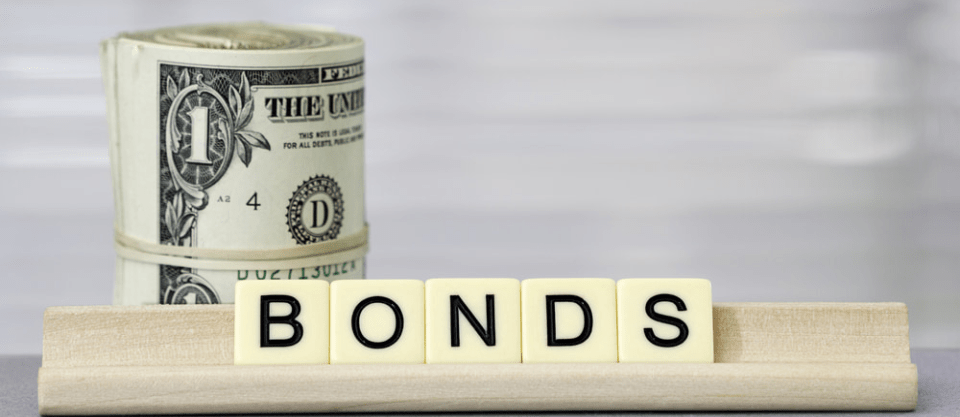What Are Bonds?
Bonds are essentially IOUs issued by companies, governments, or municipalities to raise money. When you buy a bond, you’re lending money to the issuer in exchange for regular interest payments and the return of your principal when the bond matures.
Think of it this way: instead of a company going to a bank for a loan, they come directly to investors like you. You lend them money, and they pay you interest until they repay the full amount on a specific date.
Why Invest in Bonds?
Bond investing offers several key advantages for building a well-rounded investment portfolio. Bonds help balance your investment portfolio by providing stability alongside stocks. When stock markets become volatile, bonds often provide steadier returns. Most bonds pay predictable interest payments, making them attractive for investors seeking steady income streams. High-quality bonds are generally safer than stocks, making them suitable for conservative investors or those nearing retirement.
Types of Bonds
Corporate Bonds are issued by companies to fund their operations or expansion. These bonds typically offer higher yields than government bonds but come with increased risk. Investment-grade corporate bonds are issued by financially stable companies, while high-yield bonds (junk bonds) are issued by companies with lower credit ratings, offering higher returns but greater risk. Interest income from corporate bonds is subject to federal, state, and local taxes.
Government Bonds (Treasuries) are issued by national governments and are considered among the safest investments available. U.S. Treasury bonds are backed by the full faith and credit of the U.S. government and are exempt from state and local taxes, though federal taxes still apply. The safety comes at the cost of lower interest rates compared to corporate bonds.
Municipal Bonds are issued by state and local governments to fund public projects like schools, roads, and hospitals. Interest income is typically exempt from federal taxes and sometimes state taxes, making them particularly attractive for investors in higher tax brackets. However, credit quality varies, so it’s important to research the issuing municipality’s financial health.
Key Bond Terms
Understanding these essential terms will help you navigate bond investing more effectively.
The maturity date is when the bond expires and you receive your principal back. Bond maturities are typically classified as short-term (1-3 years), medium-term (4-10 years), or long-term (more than 10 years).
The coupon rate is the annual interest rate the bond pays, expressed as a percentage of the bond’s face value. For example, a $1,000 bond with a 5% coupon rate pays $50 annually.
The face value (or par value) is the amount you’ll receive when the bond matures, typically $1,000 for corporate bonds.
Credit ratings assess the likelihood that the bond issuer will repay their debt. Major rating agencies like Standard & Poor’s use scales where AAA to BBB represents investment grade bonds, while BB and below are considered speculative or “junk” bonds.
Bond Risks to Consider
Interest Rate Risk occurs because bond prices move inversely to interest rates. When interest rates rise, existing bond prices fall, and vice versa. This risk is greater for long-term bonds.
Credit Risk is the possibility that the bond issuer might default on their payments. Government bonds have minimal credit risk, while corporate bonds carry varying degrees of credit risk depending on the issuer’s financial health.
Inflation Risk means that inflation erodes the purchasing power of your bond’s fixed interest payments over time. This is particularly concerning for long-term bonds.
Prepayment Risk applies to callable bonds that can be paid off early by the issuer, typically when interest rates decline. This forces you to reinvest at lower rates.
How Bond Yields Work
Yield to Maturity (YTM) is the total return you’ll earn if you hold the bond until maturity, assuming all interest payments are reinvested at the same rate. This is the most commonly used yield measurement.
Current Yield is calculated by dividing the annual coupon payment by the current bond price. This measure helps compare bond income to dividend-paying stocks.
Nominal Yield is simply the annual coupon payment divided by the face value – this is the stated interest rate on the bond.
Getting Started with Bond Investing
Start with high-quality bonds like investment-grade corporate bonds or government bonds to minimize risk while learning the market. Consider bond mutual funds and ETFs for instant diversification and professional management, making them ideal for beginners.
Bond laddering involves buying bonds with different maturity dates to reduce interest rate risk and provide regular income. Match your bond choices to your goals: use short-term bonds (1-3 years) for short-term goals, longer-term bonds for potentially higher yields on long-term goals, and focus on bonds with regular coupon payments for income needs.
Avoid common mistakes like ignoring credit quality when chasing high yields, trying to time interest rate movements, neglecting diversification by putting all investments in one type or issuer, and overlooking fees that can significantly impact returns.
Practical Steps to Begin
First, assess your risk tolerance and determine how bonds fit into your overall investment strategy. Next, decide whether to buy individual bonds or invest in bond funds based on your knowledge level and investment amount. Then research and select bonds using financial websites, brokers, and rating agencies. Finally, monitor your investments by keeping track of performance and any changes in credit ratings or interest rates.
The Bottom Line
Bond investing doesn’t have to be complicated. By understanding the basics of how bonds work, the different types available, and the associated risks, you can make informed decisions that enhance your investment portfolio.
Remember that bonds are just one piece of a diversified investment strategy. They provide stability and income that can complement your stock investments and help you achieve your long-term financial goals. Start small, focus on quality, and gradually build your bond knowledge and portfolio over time.
Individual bonds typically require $1,000 minimum investments, but bond funds often have much lower minimums or no minimums at all. Generally, bonds are safer than stocks, especially government and high-grade corporate bonds, though they typically offer lower returns than stocks over the long term.
A common rule of thumb is to hold your age in bonds as a percentage of your portfolio (e.g., 40% bonds if you’re 40 years old), though this depends on your individual circumstances and risk tolerance.
Frequently Asked Questions
Q: Are bonds safer than stocks? A: Generally yes, especially government and high-grade corporate bonds. However, they typically offer lower returns than stocks over the long term.
Q: How much of my portfolio should be in bonds? A: This depends on your age, risk tolerance, and financial goals. A common rule of thumb is to hold your age in bonds (e.g., 40% bonds if you’re 40 years old).
Q: Can I lose money investing in bonds? A: Yes, bond prices can decline, especially if interest rates rise or if the issuer’s credit quality deteriorates. However, if you hold to maturity, you’ll receive your principal back (assuming no default).
Q: What’s the minimum amount needed to start bond investing? A: Individual bonds typically require $1,000 minimum investments, but bond funds often have much lower minimums or no minimums at all.
Q: Should I buy individual bonds or bond funds? A: Bond funds offer instant diversification and professional management, making them ideal for beginners. Individual bonds give you more control but require more research and higher minimum investments.
Q: When do bonds pay interest? A: Most bonds pay interest semiannually (twice a year), though some pay annually or quarterly. The payment schedule is specified when you purchase the bond.














